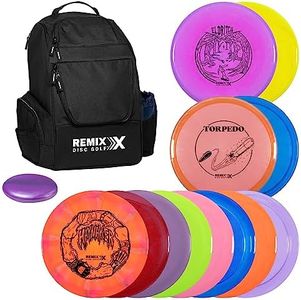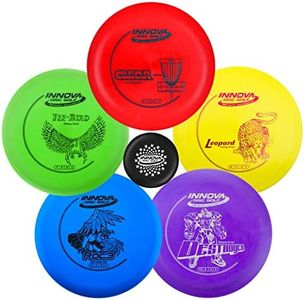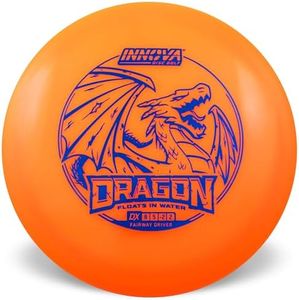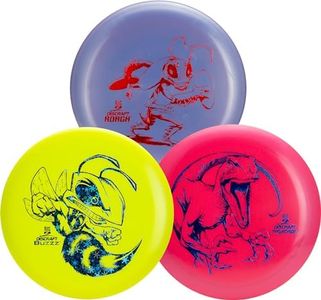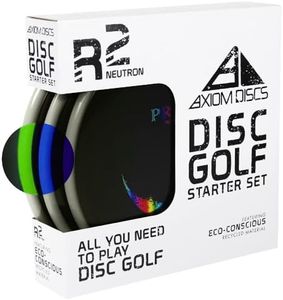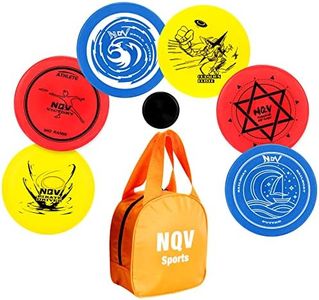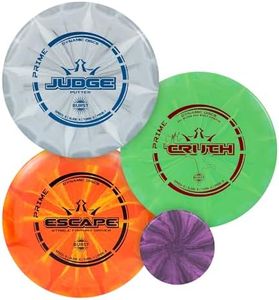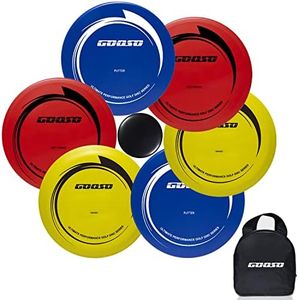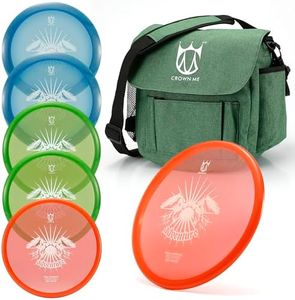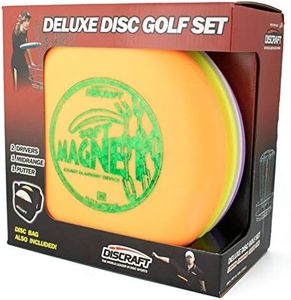We Use CookiesWe use cookies to enhance the security, performance,
functionality and for analytical and promotional activities. By continuing to browse this site you
are agreeing to our privacy policy
10 Best Disc Golf Sets
From leading brands and best sellers available on the web.Buying Guide for the Best Disc Golf Sets
Picking the right disc golf set can really help you enjoy the sport more and improve your performance, whether you’re just starting out or looking to upgrade your gear. Disc golf sets usually come with a combination of discs meant for different types of throws. The key is to choose a set that matches your skill level and playing style, making sure each disc in the set serves a purpose and is comfortable for you to throw. Focus on the main characteristics of the discs, as these influence how the disc flies and handles, and will help you find a set that feels right for your needs.Disc Types (Driver, Mid-range, Putter)Disc golf sets usually include three main disc types: drivers, mid-range discs, and putters. Drivers are designed for long-distance throws, mid-range discs are for more controlled, medium-distance shots, and putters are for short-distance putting towards the basket. Beginners may find it easier to start with discs that are slower and easier to control, while more advanced players might appreciate a wider variety of specialized discs in a set. Think about how you usually play and make sure the set covers all your basic needs—if you’re new, a simple three-disc set is often enough, while advanced players may look for sets with more specialty discs.
Disc WeightThe weight of a disc affects how far and how controllable it is. Lighter discs (usually under 170 grams) are generally easier to throw, especially for beginners or players with less arm strength, while heavier discs (170-180 grams) are more stable and less likely to be blown off course by the wind, making them a better choice for experienced players who want more control and consistency. For newer players or children, starting with lighter discs can be more encouraging and help build proper technique, while advanced players can experiment with a range of weights to suit specific shots or conditions.
Plastic TypeDisc golf discs are made from different types of plastic, which can impact grip, durability, and price. Basic or beginner sets often include discs made from softer or less expensive plastic, which can have a better grip but might wear out faster. Premium plastic types tend to last longer and offer better performance in various weather conditions, though they may feel slicker or firmer. If you play in rough terrains or varying weather, or want your discs to last longer, consider sets made from higher-quality plastic, while casual players might be just fine with base plastic.
Flight RatingsDiscs are labeled with flight ratings (usually four numbers), which represent Speed, Glide, Turn, and Fade. Speed tells you how much power is needed for the disc to fly properly; lower numbers are easier for beginners. Glide measures how long the disc can stay in the air, with higher values helping with distance for all skill levels. Turn shows how much the disc will curve right (for right-handed backhand throws), suiting players who need less stability. Fade represents how much the disc will hook left at the end of its flight; more fade gives a stronger finish. Beginners should look for discs with lower speed and fade, and higher glide, while advanced players might use the numbers to build a specialized set for different shot types.
Set CompositionSome disc golf sets have just the basic three discs (driver, mid-range, putter), while others may include more discs or even extra accessories like a mini marker, bag, or towel. The right set composition depends on how much gear you need and how much you want to carry. Beginners often do best with the simplest sets so they can focus on learning the basics, while more committed players may want sets with more options, so they can experiment with various discs and better handle different course challenges.

